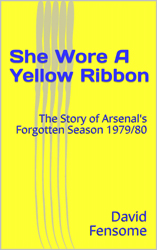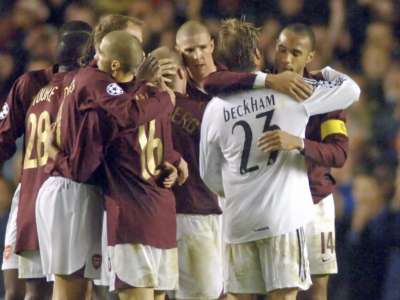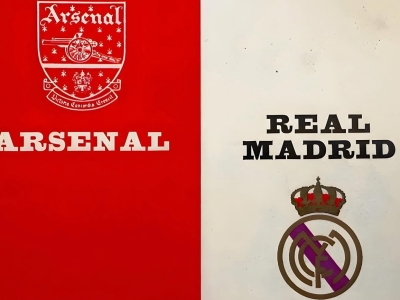It is late in the evening on the 14th May, 1980, and The Jam, sum it up: ‘The dying spark, you left your mark on me’, the previous three hours had indeed been The Bitterest Pill. The 1979/80 football season had been a momentous journey for the Arsenal and while it still had two more games to go of a never ending story, symbolically it ended when Carlos Pereira lurched to his left and blocked Graham Rix’s penalty kick. I’d watched it through my fingers, held up over my face with tears streaming down my cheeks – I knew what would happen before the penalties even started.
That evening, so soon after defeat to West Ham in the FA Cup Final five days earlier, was the severest blow upon the deepest bruise. Yet less than two weeks earlier, as the non-stop Brian Talbot headed the single goal sufficient to claim a place in the Cup Final a different conclusion hung like a dream in the barmy spring night air. For in the space of nine days Arsenal had claimed two of the greatest victories in their history: 1-0 in Turin; and 1-0 in the Cup semi-final 3rd replay: nine days that represent the zenith of Terry Neill’s tenure as Arsenal manager. Although we weren’t to know then, the poignancy of those few days would later grow and spread exponentially, every time we saw the hazy re-runs on YouTube of Paul Vaessen’s goal in the Stadio Comunale, the goal that causes Paul’s star to blaze still in the Turin sky with a magnitude rarely equalled.
It was a season which taught lessons to me, the boy to the man who now writes these words that football glory can eclipse the smallness of mere trophies, that it resides in the community which exists between a club, its team, and its supporters; glory is located in the shared space where those three things overlap: in the end Turin and Highfield Road were enough, and to go with Big Willie Young, Rixy, Sunderland, Pat Rice and all the golden shirted heroes into the long night of time past was a victory of a bigger kind! Victoria Concordia Crescit.
She Wore A Yellow Ribbon: The Story of Arsenal’s Forgotten Season 1979/80 is my attempt to capture the joy and the sadness of that long, long season, which now, from the viewpoint of contemporary football, seems so unimaginable. It discusses the chemistry and the football engineering of Neill and Don Howe as they built their great cup team of the late seventies, and how that side came of age in the sun at Wembley in May 1979, and started the 79/80 season as genuine pretenders to the crown. Over the longest of seasons via Europe, Swindon Town in the League Cup, Turin, Liverpool again and again and again it builds to a sustained moment of football elation courtesy of Vaessen and Talbot and then crashes with a sudden and bewildering fall, to leave its own story hidden beneath the debris of its ending. But to pick over that debris is not the act of a car-crash fascination - it is to acknowledge that the values of football surpass the littleness of defeat, that going through it trumps even victory. The tears soon dry, next season soon comes, and it’s the Arsenal, it’s the Arsenal! So come on you Gunners:
“What did she wear?
She wore, she wore
She wore a yellow ribbon
She wore a yellow ribbon in the merry month of May
And when, I asked, oh why she wore her ribbon
She said it’s for The Arsenal and were going to Wembley
Wembley, Wembley
Were the famous Arsenal and were going to Wembley.
WEM-BER-LEY, WEM-BER-LEY…”
David’s book She Wore A Yellow Ribbon: The Story of Arsenal’s Forgotten Season 1979/80 is now available for download to kindle on Amazon for £3.99. Click here to go to the page on Amazon’s website.








